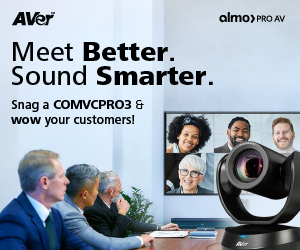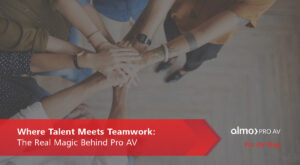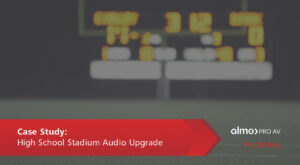Want a New Year’s Resolution? Put the “Professional” in Pro AV
You do all these things because you’re supposed to be a responsible adult but so many of you still look and sound terrible in every video call. I can’t tell how many times I’ve witnessed an executive level person of an AV related company or organization sound and look terrible during an industry interview or podcast. It’s so bad that it’s unusual when they do it well.
I would argue that you are tarnishing your value as a supplier, client and coworker if you don’t get the basics of sound and video correct on a personal level.
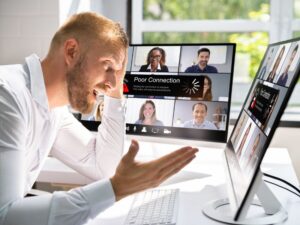 Here is a list of things that I don’t want to see or hear including my nicknames for each:
Here is a list of things that I don’t want to see or hear including my nicknames for each:
- Only one half of your face because the rest is out of frame. (Abstract Art)
- Only one side of your face because you’re not looking at the camera. (The Profile)
- A dark face because you’re poorly lit. (Witness Protection Mode)
- Way too much space above the top of your head. (Kilroy Was Here)
- Your chin. (The Uppercut)
- An empty conference table with you at the far end. (The Bowling Alley)
- Your laptop microphone. (Speakerphone Mode)
- Your videobar 25 feet away from you. (1/24 Scale)
Face it. Literally. Your laptop camera and microphone look and sound terrible. Your lighting is non-existent. Why are you using the built-in $2.00 microphone and $10.00 webcam to try and sell someone on the need to invest $100K in their conference room?
Promote the value in a quality audiovisual investment starting at your desk – convey your professionalism one-on-one.
I know this can be a vanity issue for some of us. We don’t think we look good on camera, so we turn the camera on only because it’s expected. Speaking as a lifetime member of the Introvert Club, I get it. But as a fellow coworker and introvert said to me, “Preparedness is the best medicine for nerves, so it all began with a simple thought, ‘If I upgrade my webcam, maybe I’ll feel more confident on camera.’” For him it started with a camera that’s popular with content creators. That lead to research on lighting and then what elements were in view of the camera frame. After that came the audio. He now has the best looking and sounding rig in the entire company. Plus, he and his wife started doing podcasts! He’s not even in the Pro AV division, he’s in IT. I might have the edge on him on the audio side, but he absolutely smokes me on the video side.
Lesson: If your IT person looks and sounds better than you, you seriously need to up your game.
Remind yourself that we are in Professional AV and more importantly, that we are in a relationship business. You wouldn’t visit your client in person knowing that you had bad breath so why are you practicing virtual bad breath with every video call?
Camera, lights, microphone and look up the “Rule of Thirds” for subject framing. It’s a “system” not unlike all the various components we put together for a client’s “system”. While it may be on a smaller scale it should be no less professional than the experience we’re promoting.
While we would love to work with you on your next $100K project, we’re no less interested in helping you look more professional on a personal level. This is the AV industry – we’re all in this together.
If you enjoyed this blog, check out Tom’s “Choose Quality AV” blog for more insights.

Tom Kehr
CTS-D, CTS-I, Network+, LEED Green Associate, ISF-C, ATD Master Trainer
In-House System Designer and Trainer
Supported Applications: System Design

 Fast forward, I joined the world of Pro AV distribution. My role as a Category Manager for
Fast forward, I joined the world of Pro AV distribution. My role as a Category Manager for 
 While I had read AVIXA’s and Pearson’s (the testing center) details on what to expect, I was a bit verklempt when I first arrived at the testing facility. You may not wear a jacket inside nor a cap nor jewelry. In fact, I had to leave my wedding ring in a locker, along with my keys, phone etc. No hair ties or clips. Empty your pockets. Expect to roll up your sleeves and do your own pat down. Don’t get frazzled. This is standard practice. Do not take a calculator. One will be provided for you along with a dry erase marker and sheet. You need two forms of identification. ie, passport and driver’s license.
While I had read AVIXA’s and Pearson’s (the testing center) details on what to expect, I was a bit verklempt when I first arrived at the testing facility. You may not wear a jacket inside nor a cap nor jewelry. In fact, I had to leave my wedding ring in a locker, along with my keys, phone etc. No hair ties or clips. Empty your pockets. Expect to roll up your sleeves and do your own pat down. Don’t get frazzled. This is standard practice. Do not take a calculator. One will be provided for you along with a dry erase marker and sheet. You need two forms of identification. ie, passport and driver’s license.
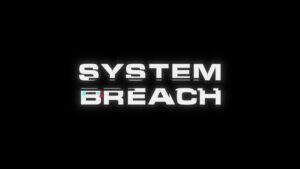 In the modern business world, commercial audiovisual (AV) systems play a vital role in facilitating communication, collaboration, and presentations. These systems have become indispensable for conferences, meetings, live events, and digital signage. However, with the increasing reliance on AV technology, companies must also consider the security of these systems. When your AV systems are connected to your corporate network, they could become an entry point for cyber threats, data breaches, and other security risks. So, how secure is your commercial audiovisual system?
In the modern business world, commercial audiovisual (AV) systems play a vital role in facilitating communication, collaboration, and presentations. These systems have become indispensable for conferences, meetings, live events, and digital signage. However, with the increasing reliance on AV technology, companies must also consider the security of these systems. When your AV systems are connected to your corporate network, they could become an entry point for cyber threats, data breaches, and other security risks. So, how secure is your commercial audiovisual system?
 In the past, AV systems were often standalone units, isolated from company networks. However, today’s commercial AV solutions are integrated with cloud platforms, Wi-Fi networks, and centralized control systems, making them more vulnerable to cyberattacks. These systems allow for remote management and the ability to update settings across multiple locations, offering great convenience but also opening the door to potential breaches. If not properly secured, a compromised AV system could result in unauthorized access to sensitive information, disrupted meetings, or even compromised data integrity.
In the past, AV systems were often standalone units, isolated from company networks. However, today’s commercial AV solutions are integrated with cloud platforms, Wi-Fi networks, and centralized control systems, making them more vulnerable to cyberattacks. These systems allow for remote management and the ability to update settings across multiple locations, offering great convenience but also opening the door to potential breaches. If not properly secured, a compromised AV system could result in unauthorized access to sensitive information, disrupted meetings, or even compromised data integrity.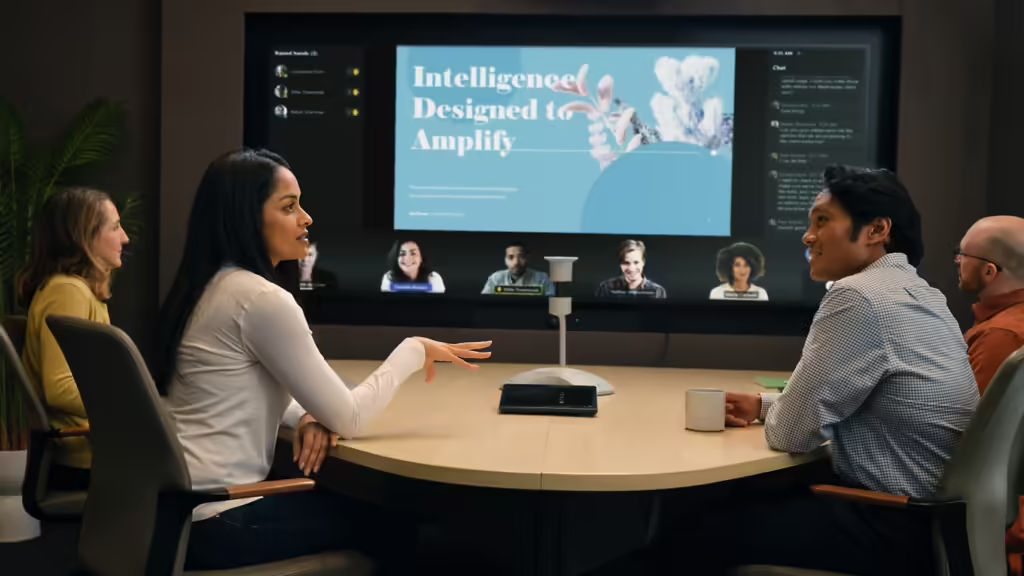
 While the security risks are real, there are numerous steps that organizations can take to safeguard their commercial AV systems. Implementing the following best practices can significantly reduce the risk of an attack and enhance the overall security posture of your AV setup:
While the security risks are real, there are numerous steps that organizations can take to safeguard their commercial AV systems. Implementing the following best practices can significantly reduce the risk of an attack and enhance the overall security posture of your AV setup: The world of commercial AV security is rapidly evolving, with new technologies designed to help businesses stay ahead of emerging threats:
The world of commercial AV security is rapidly evolving, with new technologies designed to help businesses stay ahead of emerging threats:


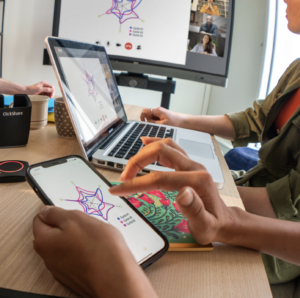 In today’s interconnected world, every meeting room, collaboration space, or presentation environment demands a complete and integrated AV solution. These can be very simple or quite complex. By asking all the right questions and offering all of the best solutions accordingly—you provide customers with a reliable, user-friendly experience that meets their goals and budgets. For resellers and integrators, this approach not only drives sales but also solidifies your role as a trusted partner in delivering cutting-edge AV solutions.
In today’s interconnected world, every meeting room, collaboration space, or presentation environment demands a complete and integrated AV solution. These can be very simple or quite complex. By asking all the right questions and offering all of the best solutions accordingly—you provide customers with a reliable, user-friendly experience that meets their goals and budgets. For resellers and integrators, this approach not only drives sales but also solidifies your role as a trusted partner in delivering cutting-edge AV solutions.
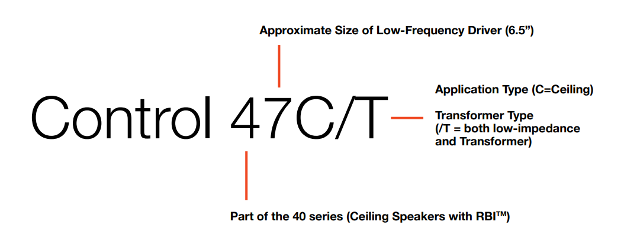
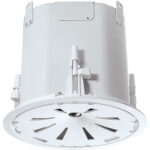 Here we have the
Here we have the 
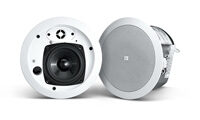
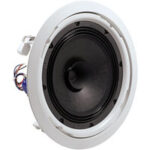 Similarly, for a paging application where aesthetics are a consideration, the
Similarly, for a paging application where aesthetics are a consideration, the  Please note that despite the overlap between JBL models between various series, you should not assume that there is always an “apples-to-apples” comparison. For example, some series will have necessary accessories or features included like back cans or tile bridges, while others may not. Always research to make sure you are making the right choice, and contact us if you have questions!
Please note that despite the overlap between JBL models between various series, you should not assume that there is always an “apples-to-apples” comparison. For example, some series will have necessary accessories or features included like back cans or tile bridges, while others may not. Always research to make sure you are making the right choice, and contact us if you have questions! Does your project have any special circumstances where a typical ceiling speaker won’t work? Don’t worry – JBL has you covered!
Does your project have any special circumstances where a typical ceiling speaker won’t work? Don’t worry – JBL has you covered! Have a ceiling with limited above-ceiling clearance? Try the
Have a ceiling with limited above-ceiling clearance? Try the  Looking for a low-profile speaker which is easy to install and fits seamlessly into a standard drop-tile ceiling? Try the
Looking for a low-profile speaker which is easy to install and fits seamlessly into a standard drop-tile ceiling? Try the 
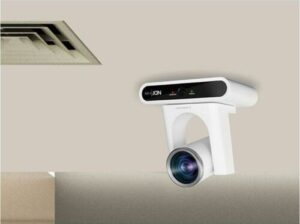 AI-powered surveillance cameras, such as PTZ (Pan-Tilt-Zoom) cameras, are revolutionizing the security landscape. These cameras use AI algorithms for advanced features like facial recognition, motion detection, and automated tracking. For instance, the Lumens
AI-powered surveillance cameras, such as PTZ (Pan-Tilt-Zoom) cameras, are revolutionizing the security landscape. These cameras use AI algorithms for advanced features like facial recognition, motion detection, and automated tracking. For instance, the Lumens 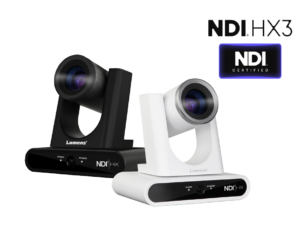
 This not only improves the efficiency of security operations but also reduces the workload on human operators. You can leverage these advanced displays to offer more comprehensive security solutions to your clients.
This not only improves the efficiency of security operations but also reduces the workload on human operators. You can leverage these advanced displays to offer more comprehensive security solutions to your clients.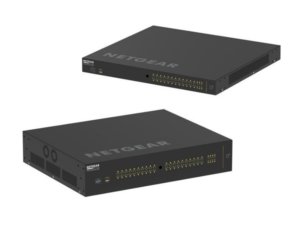 Networked AV solutions play a crucial role in managing multiple video feeds in a security system. The NETGEAR AV Line of M4250 managed network switches, including the
Networked AV solutions play a crucial role in managing multiple video feeds in a security system. The NETGEAR AV Line of M4250 managed network switches, including the 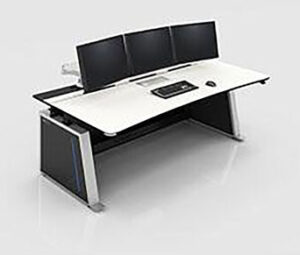 Additionally, incorporating AV furniture like the
Additionally, incorporating AV furniture like the 
